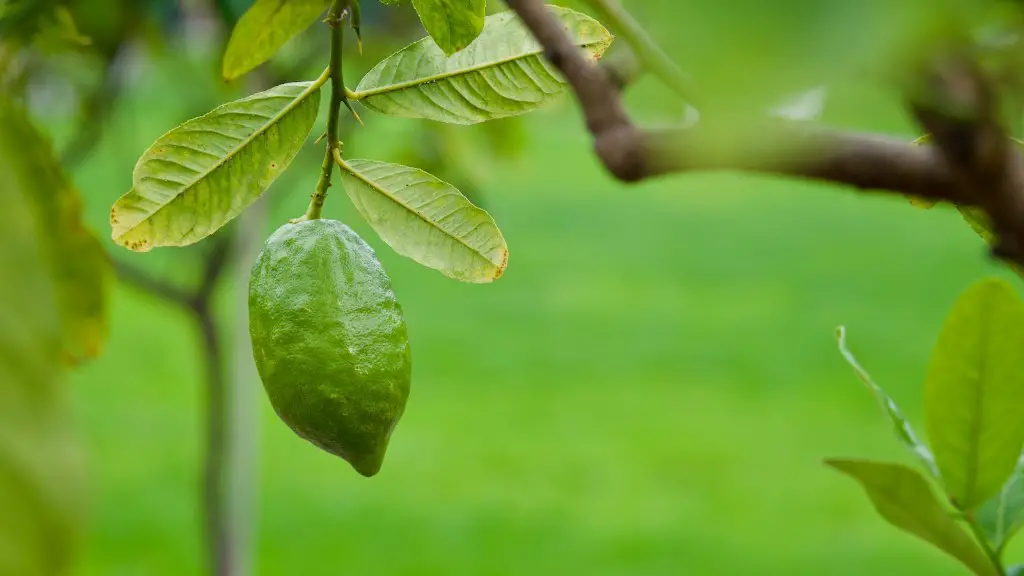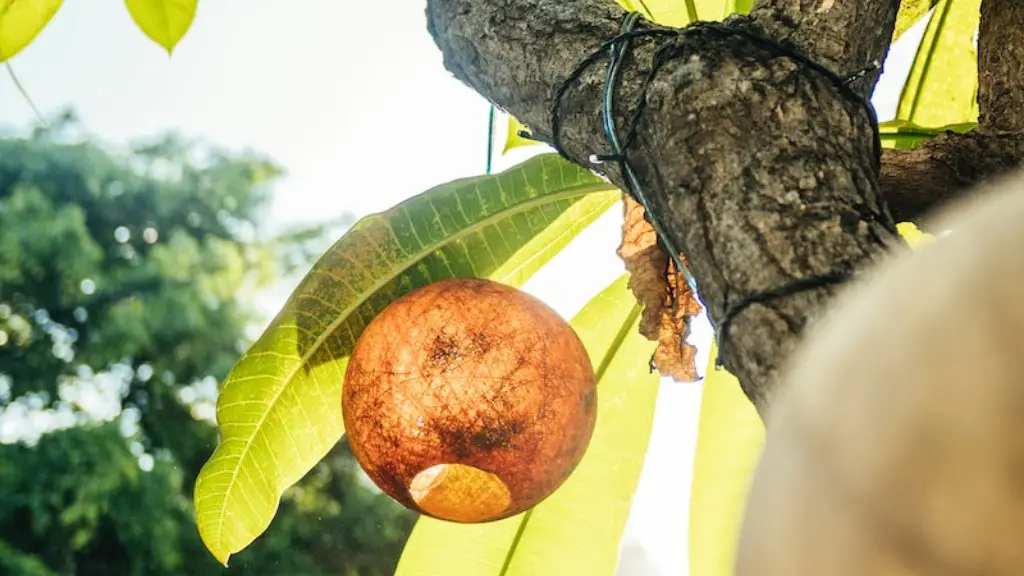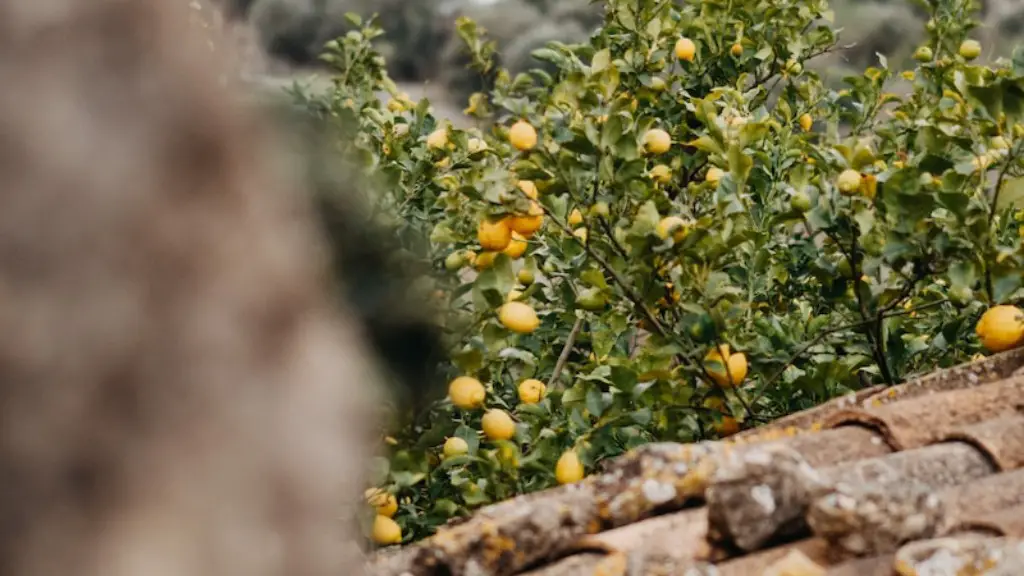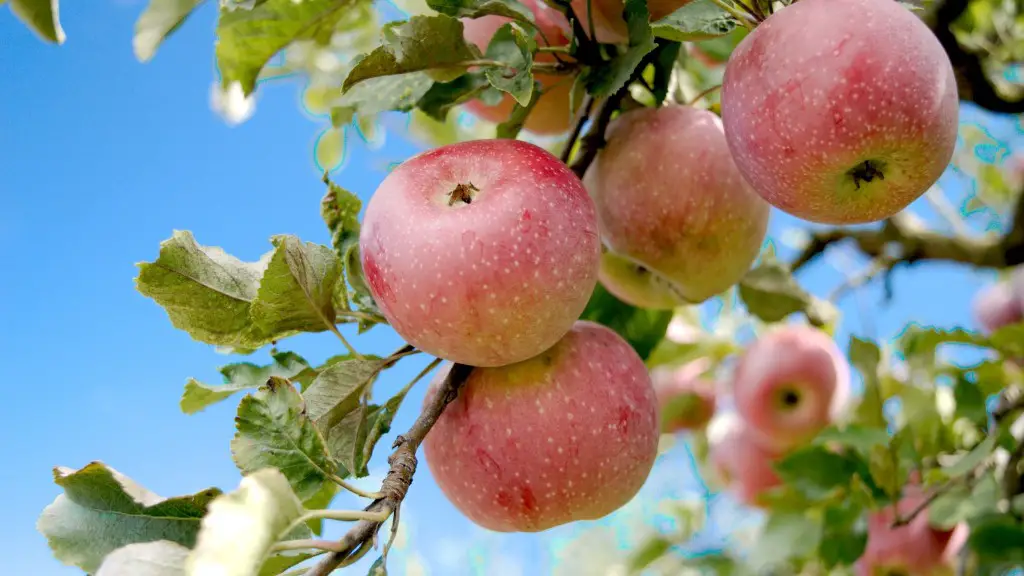A lemon tree produces fruit in a very intricate process. Firstly, the lemon tree blossoms with clusters of small flowers, which are pollinated by either insects or wind. Pollination is the transfer of pollen grains from the male anthers of one lemon blossom to the female stigma of another. The pollination process allows for fertilisation to take place and the ovules of the lemon blossoms are transformed into tiny, green fruit.
These fruits, or embryo lemons, then ripen when the sunshine and heat stimulate a hormone-like molecule known as ethylene to initiate the growth process. During this period, small wax-like granules called epicuticular wax which protect the fruit from insects and moisture, begin to develop. Sugars, acids and other compounds also synthesize within the fruit cells as the fruit develops. Classified as a citrus fruit, the acidic content of the lemon is primarily comprised of citric acid.
The maturation process of a lemon is quite the sight to behold with the outer rind changing from a shimmering green to a bright yellow when ripe. As the fruit ripens, the inside of the lemon becomes noticeably juicier, eventually reaching a peak of optimal ripeness. Once the lemon has attained its greatest amount of sweetness, the rind then hardens and starts to dry out before the fruit can rot. After the lemon falls from the tree, it typically has a shelf life of up to two weeks.
It can take up to four months for a lemon to transition from blossom to fruit, depending on certain environmental conditions and the cultivar of lemon. If the temperature is too cold or the tree is lacking in pollinators, these factors can cause the maturation process to be delayed or the fruit to not ripen at all. This is why having adequate drainage, irrigation and sufficient sunlight is essential in the successful production of lemons.
In general, lemon trees are fairly resilient and provide an abundant yield of fruit throughout the year. As long as a lemon tree is taken care of and properly nurtured, it can continue to provide gardeners with a harvest of juicy, delicious citrus fruits.
Relative Nutrition Value of Lemons
Lemons are known for their prominent citric acid content, which helps to produce a tart flavor and sour aroma. An average 100 gram lemon contains approximately 53 calories, 12.5 grams of carbohydrates, 2.4 grams of dietary fiber, 1.7 grams of protein and no saturated fat.
In addition, lemons offer numerous health benefits due to their high levels of Vitamin C and other essential nutrients, such as potassium, magnesium, zinc and iron. Vitamin C is an effective antioxidant that helps to protect the body from free radicals and can even help to boost the immune system. Lemons are also rich in dietary fiber, which can help to maintain healthy cholesterol levels and proper digestion.
The citric acid in lemons has long been used to aid in digestion and prevent indigestion. Studies have shown that including lemons in the daily diet can help to lower the risk of certain types of cancer, fight certain bacterial infections, alleviate stress and aid in weight loss. Given the ample benefits lemons can confer to one’s diet, it’s no wonder why this citrus fruit is so highly sought after throughout the world.
Uses of Lemon Trees
Lemon trees are prized for their diverse uses, both culinary and medicinal. Aside from the nutrient-rich fruits they produce, lemon leaves generate an array of health benefits and aromatic fragrance which has made them a popular addition to perfumes, cosmetics, teas and dishes alike. Lemon leaves have been used in folk remedies and traditional medicines to boost the immune system, reduce inflammation and improve circulation.
In addition to the utilization of lemon leaves, the flowers of the lemon tree are often boiled and made into a pleasant tea. This tea is utilized to reduce high blood pressure, balance blood sugar and aid in digestion. The rind of the lemon is rich in Vitamin C, limonene and polyphenols, which offer multiple medicinal benefits including anti-cancer and anti-inflammatory properties.
Lemon trees are also popularly used in landscaping because the leaves emit a strong citrus fragrance that many find refreshing and aromatic. In areas where the winter temperatures rarely drop below freezing, lemon trees can remain in the ground for up to 10 years, producing an array of fragrant blooms and lemons throughout the year.
Environmental Impact of Lemon Trees
The environmental impact of growing lemon trees is quite significant. Since they require plenty of moisture to thrive, they must be situated near an adequate water source such as an irrigation system or a pond. This often has a deep impact on the local water table, as the amount of water used over time will deplete this essential resource.
Although lemon trees are perennials which don’t need to be replanted, they can harbor numerous pest species within the bark and foliage which can have a detrimental effect on native plants and species. These pest species could also spread to nearby crops and potentially decimate the ecosystem.
In addition, the acidic properties of lemon trees can vary significantly depending on the soil quality and climate of the area. This means that over time, acidic deposits can build up in certain areas, leading to a destructive leeching of the nutrients which are vital for a healthy ecosystem.
Care and Maintenance of Lemon Trees
Lemon trees require regular maintenance and care in order to produce a healthy harvest of fruit each year. Major factors that must be taken into consideration when caring for lemon trees include soil health, watering frequency and adequate sunlight. The soil of the lemon tree should be well-drained, yet able to retain plenty of moisture to ensure the roots don’t become waterlogged.
Lemon trees also need to be fed their required nutrients on a regular basis to support the growth of healthy foliage and lemons. This can be done with a balanced fertilizer which is high in nitrogen, phosphorus, and potassium, as well as trace minerals. Pruning lemon trees should also be done on occasions when necessary to keep the tree from becoming overgrown and unruly.
Weeds and pests should also be monitored and handled appropriately. Insects and disease-causing pathogens should be kept at bay through the use of an appropriate insecticide or fungicide. Weeds should also be removed from the soil surrounding the lemon tree’s root system in order to prevent them from stealing vital nutrients from the plant.
It is important to note that in cold regions where winter temperatures regularly dip below freezing, lemon trees should be kept under wraps to protect them from the elements. Warm areas will also require some protection, particularly if the area experiences frequent periods of extreme heat. Shade cloth or umbrella-like structures are ideal for this purpose.
Harvesting and Storing Lemons
Harvesting lemons should be done when the fruit is ripe, which typically occurs when the skin has changed to a rich yellow hue. The best way to ascertain the ripeness of a lemon which is still attached to the tree is to gently squeeze the fruit and see how easy it is to move. It is also important to note that unripe lemons with a hard, green rind can take up to four months to ripen after harvesting.
Once the lemons have been harvested, they should be stored in a cool, dry place. A refrigerator is ideal for this purpose as it can keep the lemons fresh for up to two weeks. For longer-term storage, lemons can be frozen and used at a later date. Lemons can also be juiced and stored in air-tight containers or bags to be enjoyed at a later time.
Lemon trees are a delightful addition to any home garden or larger agricultural property. Despite the fact that the production process for lemons is intricate and complex, the abundance of nutrition and flavor that it produces makes it well worth the effort.





